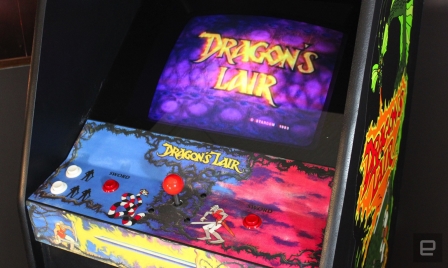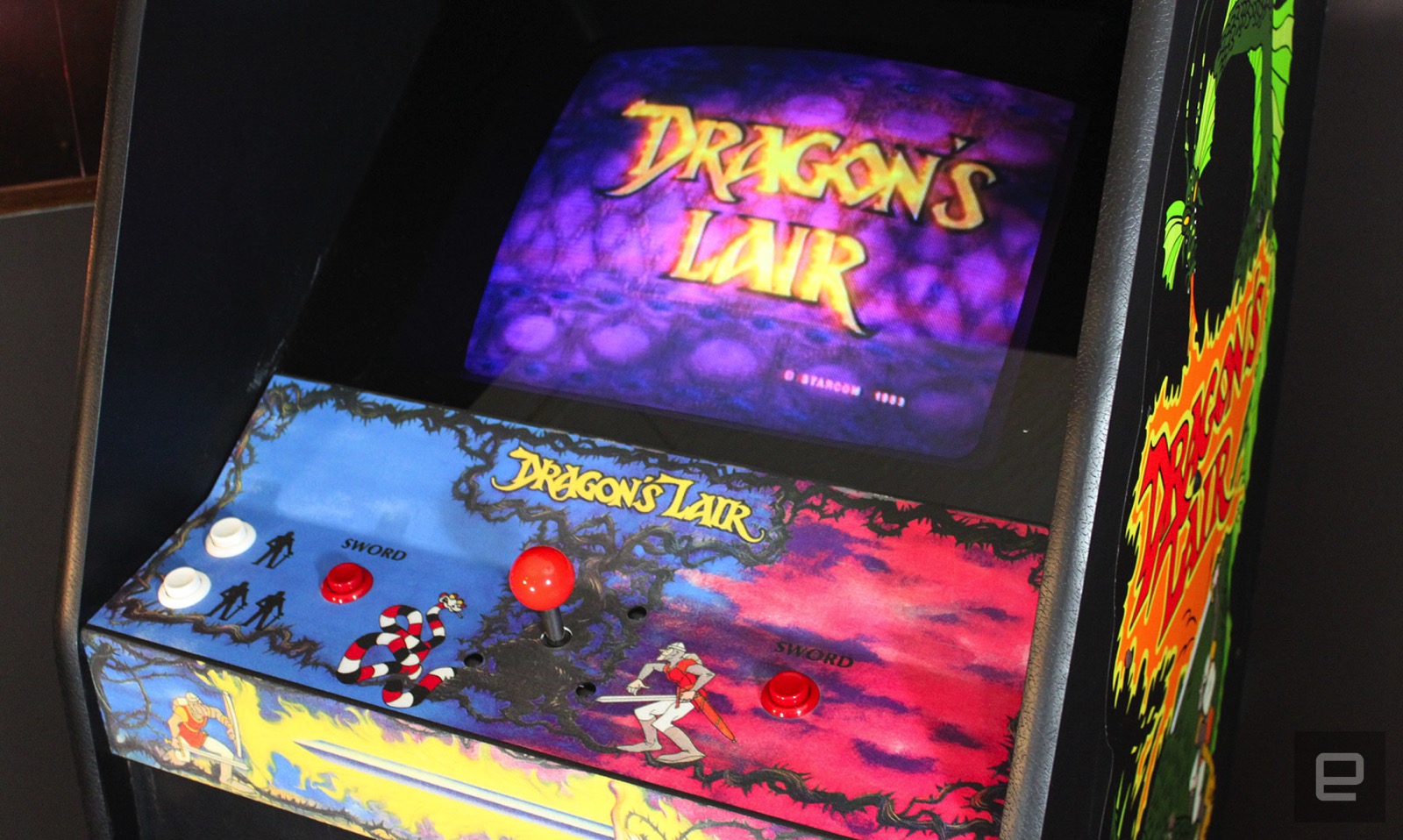How modern tech saved my ‘Dragon’s Lair’ arcade game
In the early 1980s, the arcade was still the place to play the newest and best video games. Sure, consoles existed, and were just starting to give arcades a run for their money — and were even starting to shed their wood-grain home-furniture look for a more modern feel. But home play still lacked the arcade’s mystique. As attendance began to dwindle, game makers started looking for a hook; something incredible and new that would lure people back to the arcades to spend their quarters.
Gallery: Dexter laserdisc replacement | 22 Photos
In 1983 Cinematronics found its solution in the form of Dragon’s Lair. It was a pioneer game, an animated laserdisc title drawn by veteran Disney animator Don Bluth that demanded not one but two of my hard-earned quarters to play. It quickly became an instant star in any arcade that paid $4,200 (or more) for a Dragon’s Lair cabinet. It wasn’t unusual to see it situated at the entrance of an arcade, surrounded by a crowd that spilled out of the front doors. Cinematronics even offered a satellite monitor for the top of the game so that more onlookers could follow along with other people’s gameplay.
But the game had problems from the get-go — chief among them was the unreliable home-use Pioneer PR-7820 laserdisc player and later, the LD-V1000. Fast-forward 30 years and this is where the Dexter laserdisc replacement joins our story: Dexter attempts to solve a number of laserdisc-game issues with modern hardware by completely removing the need to have a laserdisc player in your machine. For $359, you get an updatable solid-state replacement for your ancient and failing laser player.
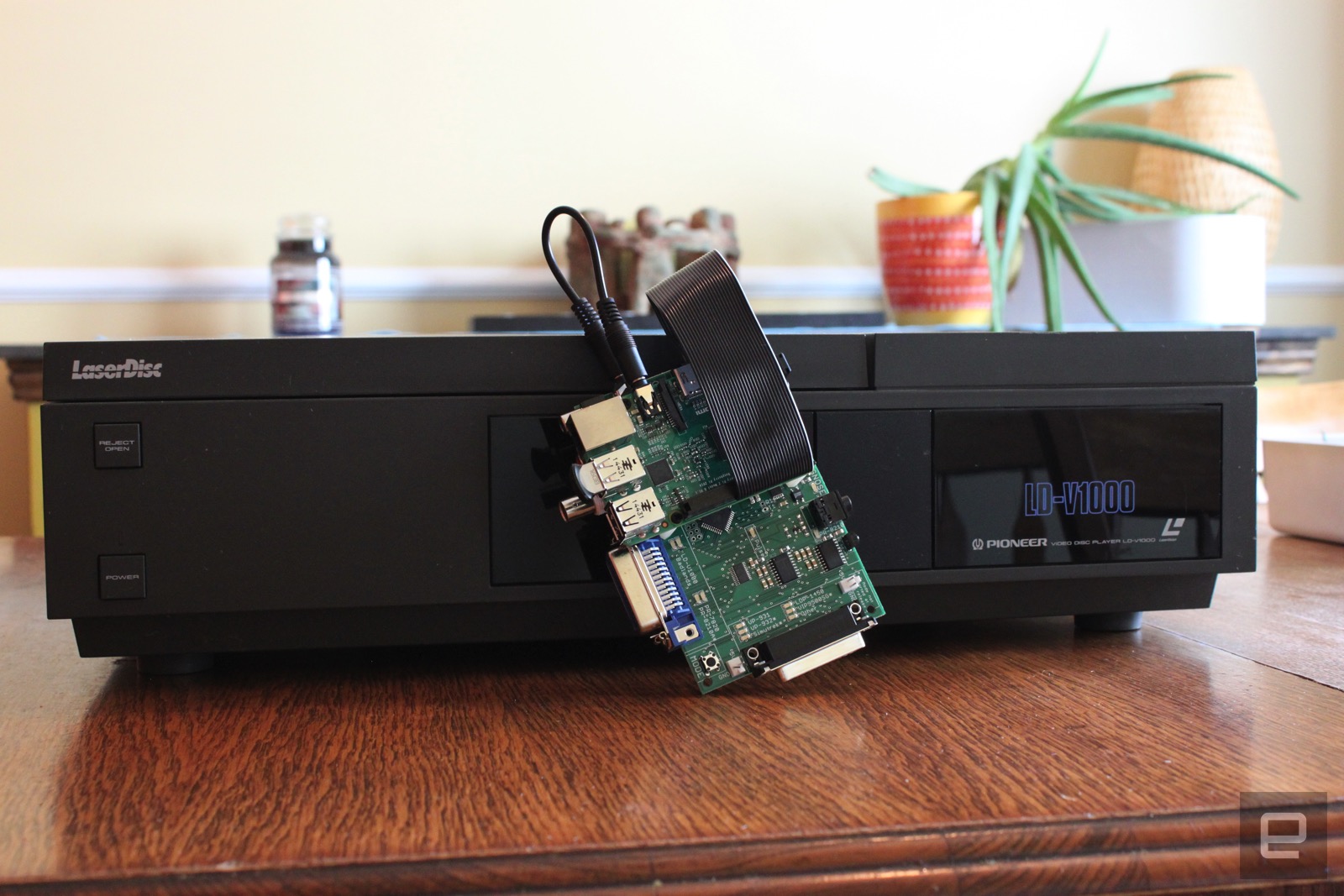
To understand why we even need Dexter to replace the original hardware, first we have to discuss its failings. Laserdisc game owners today have several major problems to overcome to keep the games running, including laser rot and failing player parts. Players can be fixed, to a point, but eventually there simply won’t be any left, as the moving parts are doomed to fail and replacements no longer exist. In fact, a gent named Shaun Wood created a special card called Merlin that enables game owners to replace laserdisc players in the game with newer models. This has stretched these games’ lives even further, but inevitably even the newer players will become scarce.
Then there’s the laser rot. Discs can oxidize over time from scratching and eventually refuse to play. Alternatively, they might show so many artifacts that the game looks awful. If you’re able to find a replacement disc, it can cost as much as $500 (for a Dragon’s Lair Limited Edition), and no facility is making new ones. Basically, then: Laserdiscs are dead and players are dead. Everything is doom and gloom for fans and collectors.
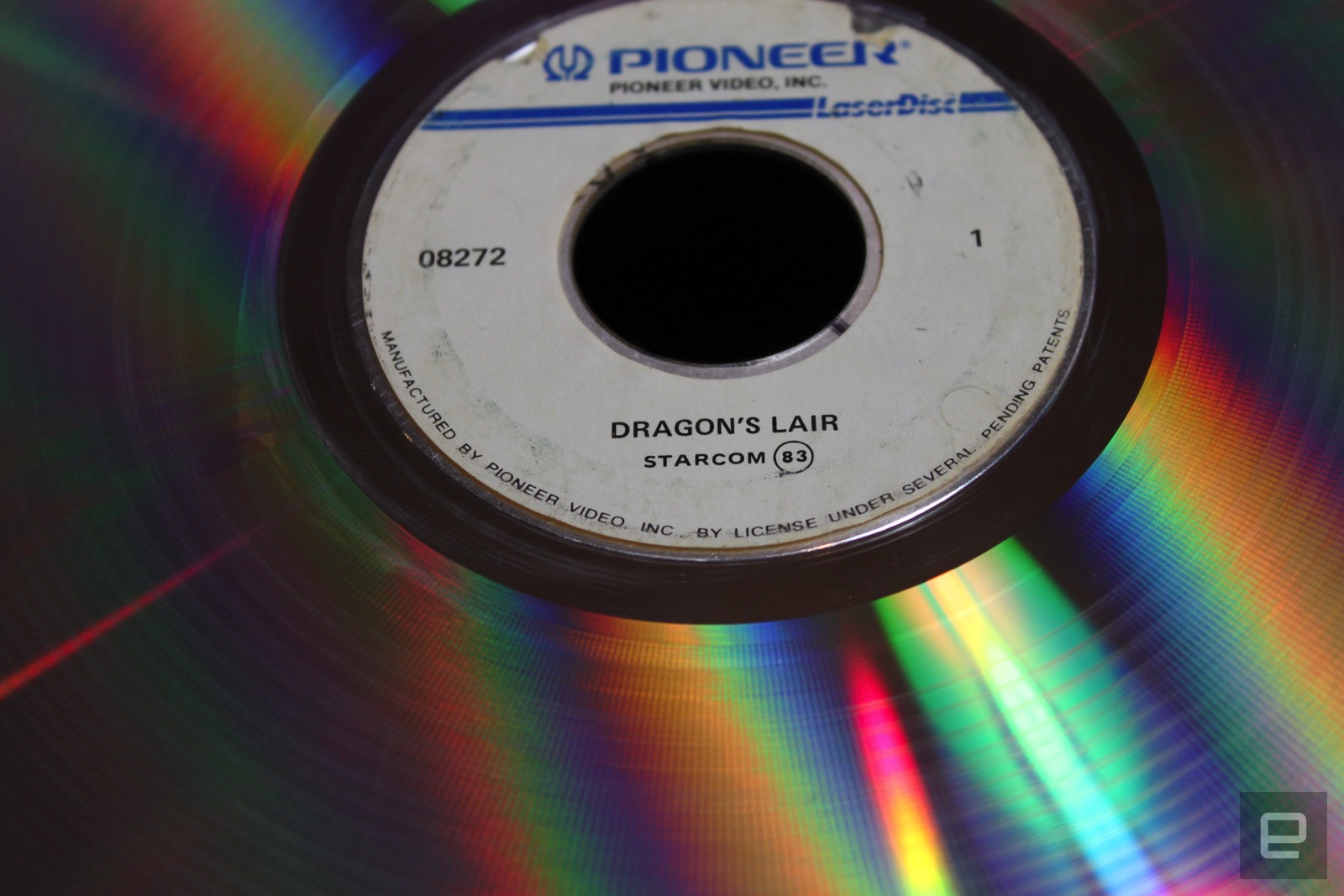
Somewhere around the year 2000, Matt Ownby wrote a piece of emulation software called Daphne (named for the princess in Dragon’s Lair) to emulate laserdisc games. With it you could play an assortment of laserdisc games on your home computer or set it up in an arcade cabinet as a complete replacement for all the game’s original parts. In 2008 Ownby extended the experiment using his first board design to interface a laserdisc game with a computer, with it now acting as the player. The natural progression from this was Dexter. Ownby and Warren Ondras spent the next eight years or so creating the hardware and software needed to make Dexter possible.
Compared with modern gaming, laser games are pretty basic as far as hardware requirements go. Broken down: When playing a game, the game ROMS dictate the game flow, and the hardware asks the disc player to play a chapter from a laserdisc. As the gamer, you make your character’s choice with proper timing, movement or action, and if you live, the program plays the next scene. If you die, the game plays a death animation. Rinse and repeat. Dexter (named for the hero in another laserdisc game, Space Ace) fits in this picture by receiving the game commands originally sent to the player, figuring out which scene to play and then playing it back on screen. The beauty of this design is that Dexter can play many different games and emulate many different laserdisc players.
Dexter is made up of two boards stacked on top of one another: a Raspberry Pi 2 that’s piggybacked on the Dexter board. The device ships with a microSD card, the board set itself, all the necessary cables, a power supply and a USB memory key. The Dexter board has a BNC-style video port, audio connectors to wire sound into your game, various plugs for the different laserdisc players it replaces and even an IR blaster, which the Cliffhanger game used for control of its player. It’s relatively painless to set up. In fact, pulling the old player out for replacement takes as much time as installing Dexter. Connect the audio/video interface to your player, and the installation is complete.
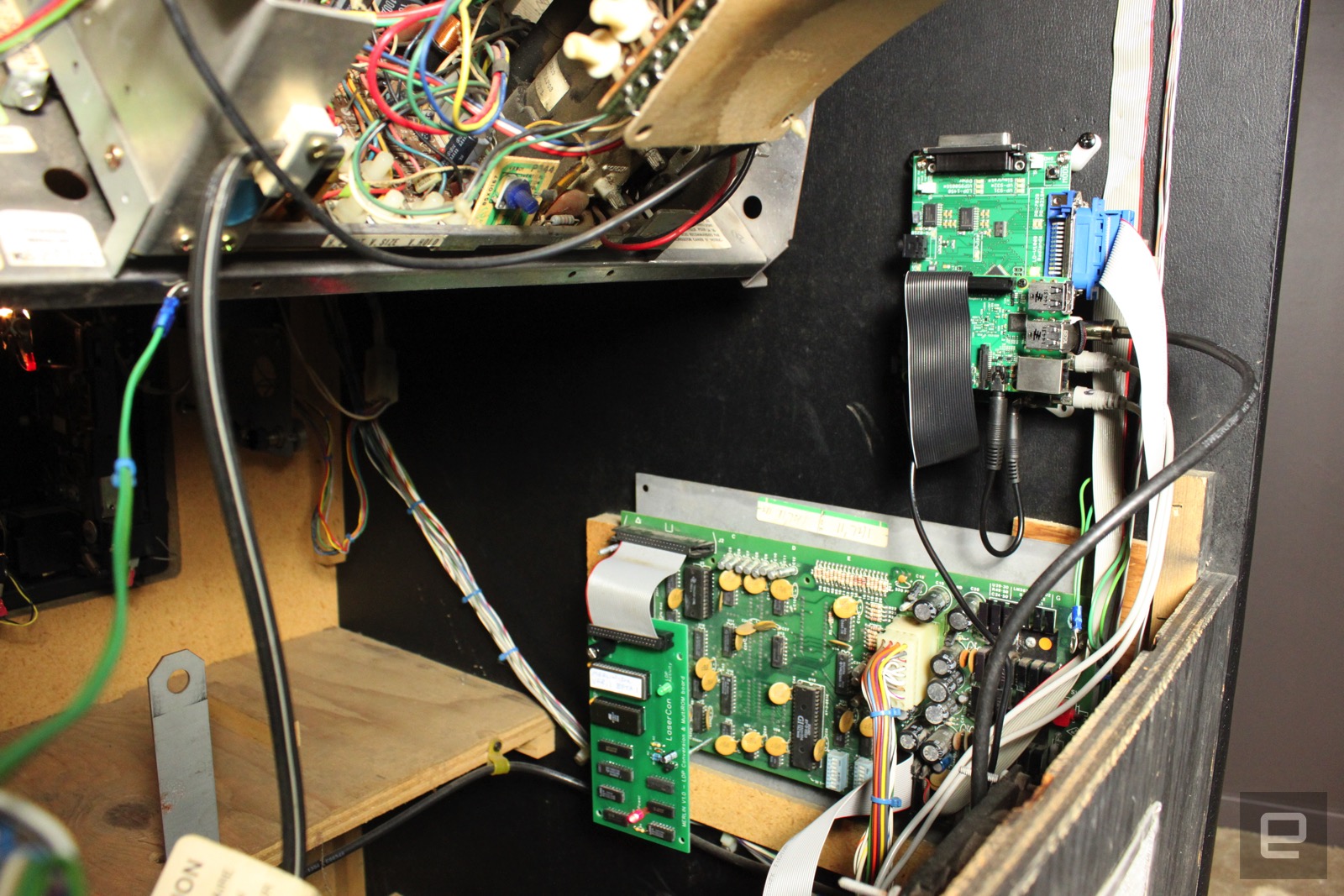
There’s no software to configure, though. Instead, there’s a program called Dexter Manager to keep the system up to date and download your licensed games. Yeah, I said licensed! Dexter is a completely above-board system; you pay for the rights to any game you use. Indeed, the USB memory stick included in the package is used to transfer software updates and purchased game images to Dexter. The update and upload process is really easy too: Plug the stick into your computer, run Dexter Manager and if it detects an update, it’ll download and put it on the memory key. Insert the key into any of the Pi’s four USB slots, power up your game and everything else happens automatically.
Because of the sizable list of games and players, things can get confusing during setup, but throwing an Ethernet cable into your Raspberry Pi can establish a VPN back to Ownby or Ondras for remote troubleshooting. I tried this and it was pretty surreal to get live support via the internet on a 30-year-old arcade game.
Once installed and configured, Dexter is invisible to the person playing the arcade game; it runs exactly as it did before the installation. All of this is to say that to review its playability would be to review the laserdisc player itself. Seek times between scenes feature the same lag as the original player (this can be removed if you wish). Video quality is the same if not better in Dragon’s Lair, though I fear mine might be worse because my disc is failing. The system is quieter without the disc player present and it weighs a few kilos less when I have to push it around the basement.
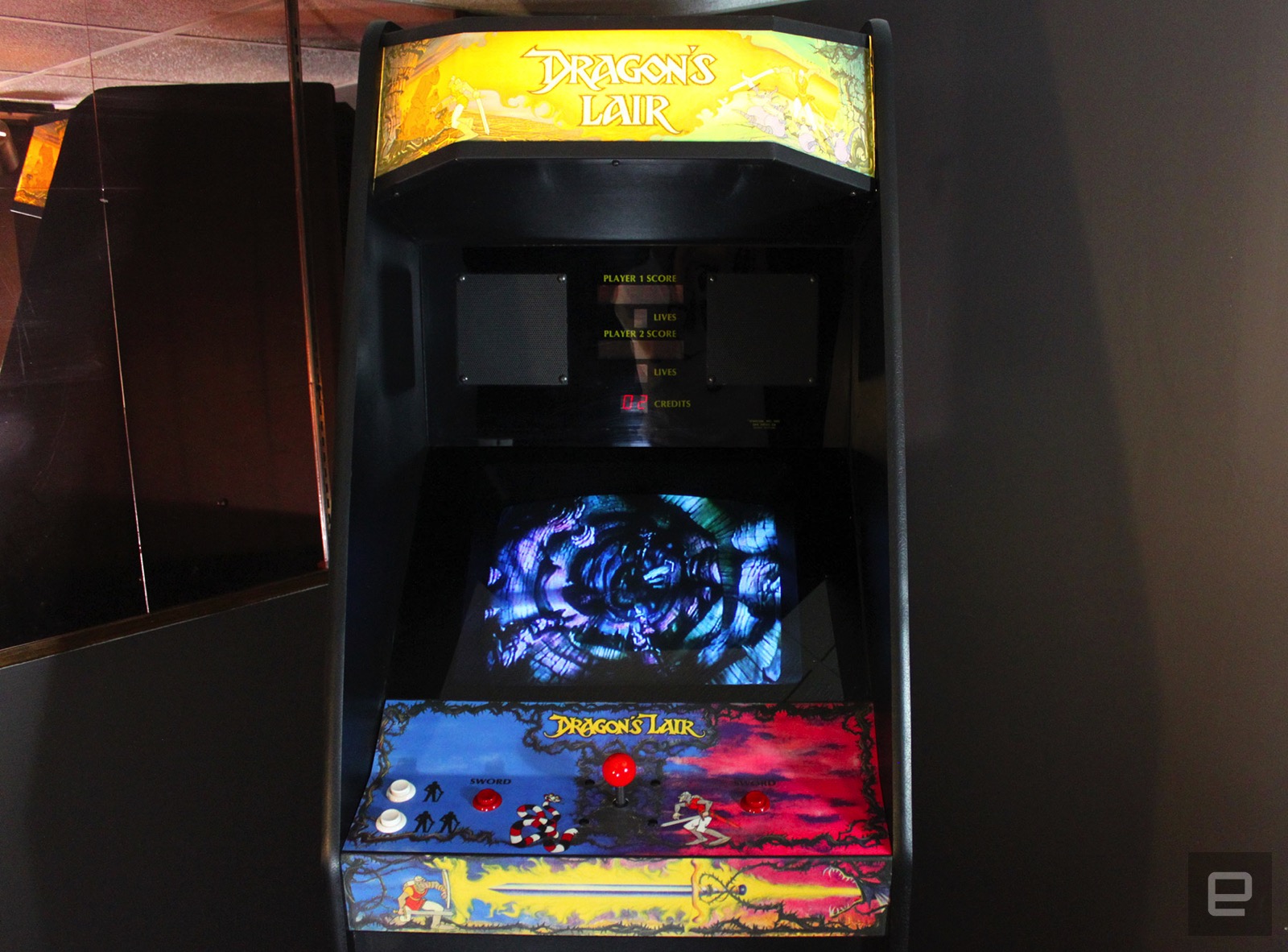
Arcade games were pricey, expensive to ship, unwieldy and heavy, so manufacturers would often offer kits to upgrade games to something else, something newer. Dragon’s Lair game could be updated to Space Ace with a kit like this. Typically, it would ship with new game ROMs, a new laserdisc, marquee, control panel overlay and replacement side art. Armed with this kit, the operator would have everything needed to convert a game to something new. Because my cabinet has a Merlin board installed (I needed it to run a newer, more reliable laserdisc player), I could switch between Space Ace and Dragon’s Lair by just swapping out the game disc. I can still do that with Dexter, but no longer have to swap discs. By holding a combination of button and the joystick I can quickly switch between games without ever having to touch the game. There’s even a newer version of the ROMs to enable Dragon’s Lair II: Time Warp play. An upgrade for the future, perhaps.
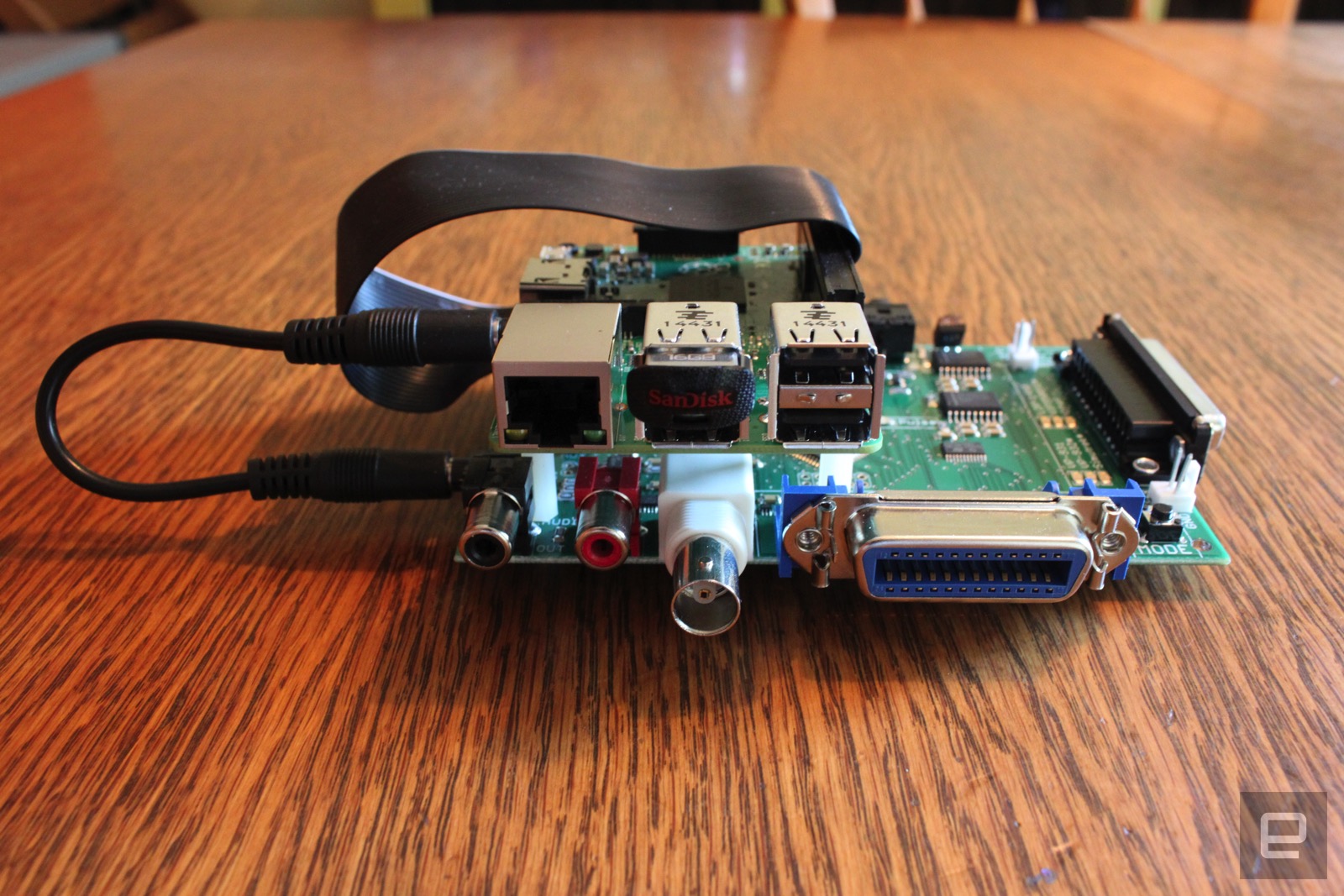
Dexter isn’t inexpensive, but it’s also not something many will buy; this is a niche product, for sure. Game images cost from $9.99 to $39.99 for the Dragon’s Lair trilogy, with the average game priced around $19.99. The system itself was $359, though all things considered, it’s likely still cheaper than replacing discs and players that will eventually fail anyway. Of course, buying one now would probably be difficult: Ownby and Ondras had but a few hundred made, and they were snatched up quickly. It’s possible more will be produced at some point (or that they have a few extras lying around), but for now Ownby tells me he has other projects in the pipeline. Besides, he adds, the hand assembly required for Dexter was pretty painful.
Arguably, what you’re really getting with this system is the ability to play your games forever. My game discs are vacuum sealed, while my players gather dust on a shelf. I’ll keep them all; they’re part of what make this game so special to me. Heck, they’ll likely still work years from now without any more wear and tear. Purists may scoff that the game isn’t original anymore, and I agree it isn’t — but in 10 years I’ll still be playing mine. If you happen to have one of these games in your home or arcade, Dexter isn’t something you should have; it’s something you must have.
(101)

